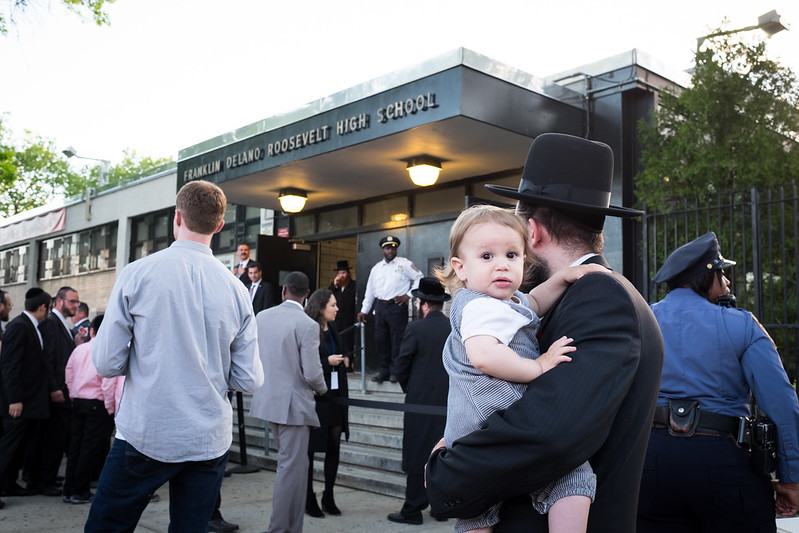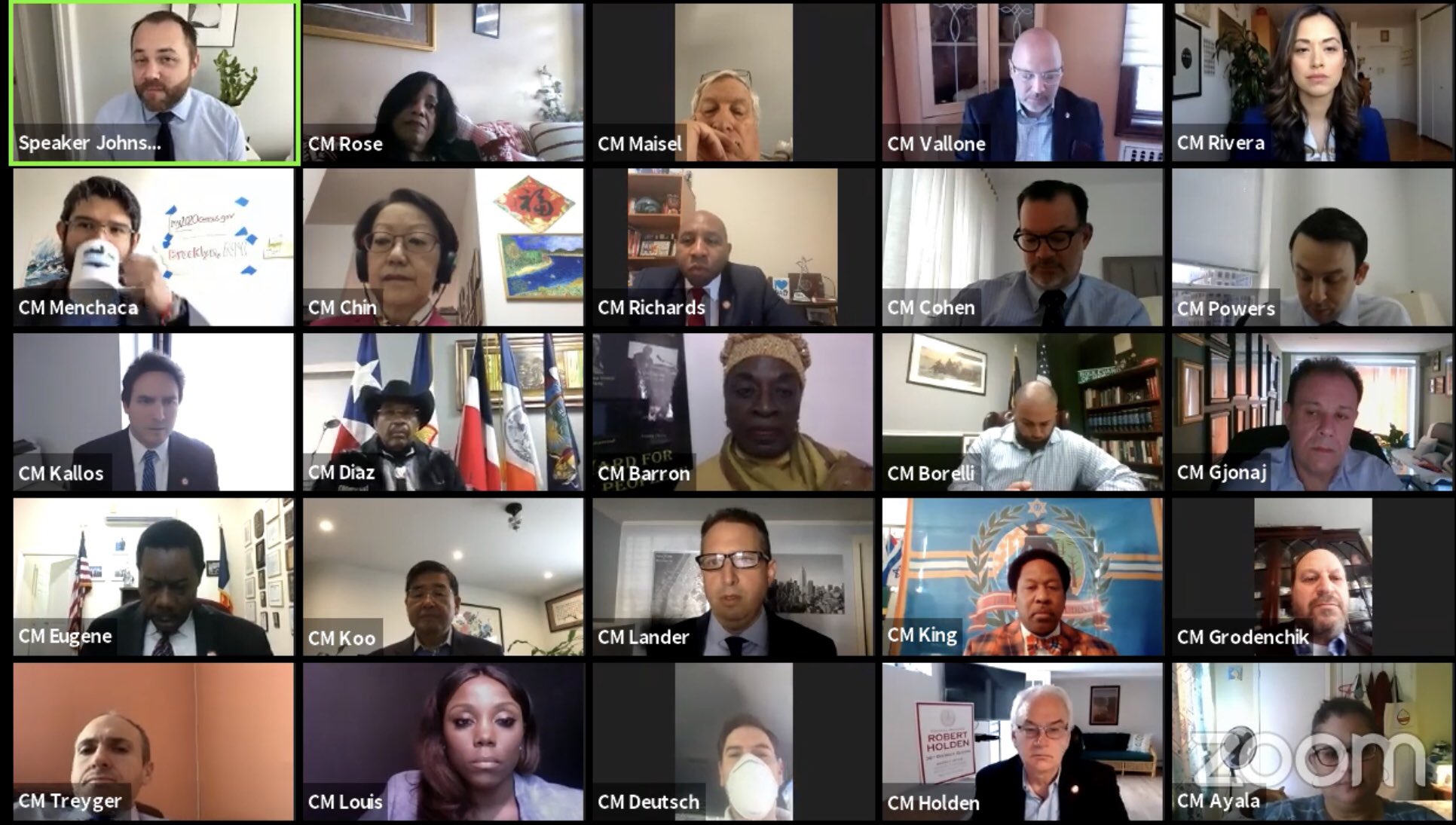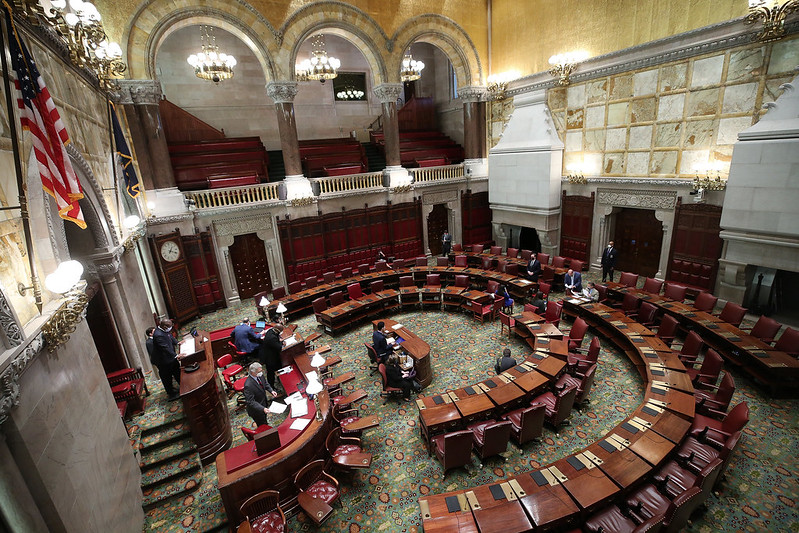6 Years After DOE Yeshiva Complaint, City Yet to Take Action as Kids Suffer

(photo: Edwin J. Torres/Mayoral Photo Office)
Six years ago, I filed a complaint with the New York City Department of Education (DOE) alongside 51 others because there are dozens of ultra-Orthodox Hasidic Yeshivas in our city that do not provide their students with an adequate secular education, as required by law.
As a result of the complaint, the city announced an investigation on July 28, 2015. Yet now more than six years later, despite findings from the investigation that backed up our complaint, no concrete actions have been taken. The lack of action by the city means that approximately 40,000 students today continue to experience educational neglect.
I signed on to the complaint because of my own experience in a Hasidic Yeshiva. I attended a Yeshiva in Brooklyn from the mid-1980s to the late-1990s, and the secular education I received was abysmal. The “English” part of my day started around 4 p.m., the end of a long day that began at 7:30 a.m. It lasted for about 90 minutes, four days a week. That small amount of time is not enough to prepare students for their futures, but the quality of instruction in that hour and a half was also laughable.
I remember learning fractions, but I never learned algebra or anything more advanced. There was very basic English grammar, but I never wrote an essay or book report. We had no science and very limited history, and there was no physical education (gym). Once we took a test and all of the answers were written on the board in Yiddish—an example that embodies how we and the faculty thought about our secular studies. It was a joke.
My mother spoke English at home, so I spoke English better than even some of my secular teachers, despite the fact that it was one of the only qualifications for the job. These 90 minutes were a free-for-all. The control, focus, and discipline of the other parts of the day were gone. The grades barely mattered, and there were weeks when we would get no secular instruction at all.
Too often efforts to improve secular education in these schools are framed as an attack on the Hasidic lifestyle and community. This couldn’t be farther from the truth. There is no reason why Hasidic students can’t attend Hasidic yeshiva and get both a robust secular education and Judaic education. I know it is possible because my own children attend a school that offers both. It is through their education that I have seen exactly what was lacking from my own.
Deprivation of a basic secular education leads to hardship in adulthood with limited higher education and job opportunities. The fact that I speak English well was a life-saver for me in many ways. Many of my peers who attended similar schools, right here in New York City, do not have that luxury.
The DOE investigation into our complaint didn’t conclude until December 2019, when then-DOE Chancellor Richard Carranza issued a letter to the New York State Education Department (NYSED) outlining the troubling findings. Now, six years after the initial complaint, nothing has been done.
Why has the de Blasio administration not remediated any of these schools? Why haven’t they released a final report of the investigation? There is clear evidence of educational neglect, and officials choose to ignore the impact that this poor education will have on 40,000 current students and many more to come - unless they act.
Mayor de Blasio and the Department of Education continue to sit on the report while punting the issue to the state, which has led to further inaction. Before Mayor de Blasio leaves office, his administration must finish what it started and release the full findings of the investigation. It’s time for action, so ultra-Orthodox children can receive the education they deserve.
***
Yonah Kohn is a former Yeshiva student. He lives in Brooklyn.
***
Have an op-ed idea or submission for Gotham Gazette? Email This email address is being protected from spambots. You need JavaScript enabled to view it.
To Ensure Safety and Increase Participation, Let’s Allow Public Government Meetings to be Conducted Virtually

(photo: @CMFarahLouis)
Whether we like it or not, COVID-19 has fundamentally changed the ways we work and gather. While there is no substitute for being in the same room as family, friends, and colleagues, for the past 18 months, this once-in-a-lifetime pandemic has taught us how to come together virtually and get things done.
Most of us had never even heard of Zoom before offices started closing, but it and other platforms like Webex and Microsoft Teams have become part of our daily lives as we adjusted to this new virtual world. Most of us probably know the feeling of “zoom fatigue,” a whole new way to be tired!
This past spring and early summer, as COVID-19 positivity rates declined and more and more of us got vaccinated, New Yorkers became more comfortable returning to our pre-pandemic rituals. We are now eating inside at restaurants, attending indoor events, and more recently, hosting in-person meetings to conduct important business before the City of New York.
When we adopted the new city budget at the end of June, we were able to meet inside City Council chambers with our colleagues for the vote. It was the first time in over a year that we finally gathered in person, and it was a relief to celebrate together the passage of a budget that restored pandemic cuts and made meaningful investments in our communities to help boost and focus the recovery.
Unfortunately, we may be done with the virus, but the virus is not done with us. Driven by the recent, rapid spread of the Delta variant, New York City’s COVID-19 positivity rate is hovering near 4%, all five New York City boroughs (counties) are experiencing high community transmission rates per the CDC, and hospitalizations are on the rise. In the current context, we are concerned about the safety of city government officials, civic leaders, and the general public attending in-person meetings.
Since the Governor lifted the emergency Executive Order, New York State law requires that all meetings of public bodies, including Stated meetings of the full New York City Council and committee meetings, must be held in person and remote meetings are no longer allowed. This will affect a high number of volunteer civic institutions that reconvene annually in September, including borough boards, community boards, precinct community councils, and others. Given the severity of the Delta variant, we strongly recommend providing a remote option for these public meetings.
It would be irresponsible to force community members, volunteers, and public servants alike to provide their input, which we need to govern effectively, in person, without a remote option. Indeed, a lack of remote meeting options will also present a special, inequitable, and frankly unacceptable barrier to immunocompromised New Yorkers.
Over the past 18 months, remote meetings not only allowed us to continue our work at the horrific heights of the pandemic, but they opened the door for more civic participation. This was a most welcome side effect of the new virtual reality that we could not have predicted. Indeed, in the time of COVID-19, we have seen a marked increase in public participation and enthusiasm for legislative and budgetary matters affecting the lives of all New Yorkers. To build on this passion, and to prioritize safety, we must fully integrate remote options like Zoom into city government meetings moving forward even after COVID-19 is finally vanquished.
With fall fast approaching, New York State must take swift action to ensure safe maximum participation at public meetings. We may be growing tired of virtual meetings, but they have become an essential lifeline for us to continue our work while keeping ourselves, our families, and our communities safe. Let’s take the lessons learned over the course of the COVID-19 pandemic and preserve this crucial option.
***
City Council Member Adrienne Adams represents District 28 in Queens. City Council Member Justin Brannan represents District 43 in Brooklyn. On Twitter @AdrienneEAdams1 & @JustinBrannan.
***
Have an op-ed idea or submission for Gotham Gazette? Email This email address is being protected from spambots. You need JavaScript enabled to view it.
Expanding State Extended Unemployment Benefits Could Protect 395,000 New Yorkers, But the Legislature Must Act Now

The New York State Senate (photo: NY Senate Media Services)
New York can take precautionary measures now to protect unemployed residents in the event that Congress allows federal unemployment insurance programs to expire on Labor Day. This can be done by the State Legislature passing a bill that ensures the state’s Extended Benefits program remains in place under the total unemployment rate activation trigger when 50% state funding is required.
Right now, of the nine states (plus DC) with their Extended Benefits programs turned on, only four will continue beyond Labor Day. The majority of these state programs will shut down because the federal government will resume covering half the cost instead of providing full funding.
While neighboring states Connecticut and New Jersey will rightfully keep supporting long-term unemployed workers through the pandemic recovery, New York will have its Extended Benefits program shut off.
That is unless legislators, in concert with incoming Governor Kathy Hochul, work to keep the program active.
According to the most recent U.S. Department of Labor numbers, 725,000 New Yorkers were enrolled in the federal Pandemic Emergency Unemployment Compensation (PEUC) program and 10,000 in the state’s Extended Benefits (EB) program the week ending July 31. The way that these programs function is that workers exhausting their PEUC benefits transition onto EB. However, if the state EB program also turns off on September 6, hundreds of thousands unemployed New Yorkers will lose a key source of income.
A lot of suffering can be avoided by following the policy structure implemented in the adjacent states. Assuming there’s approximately a (1) 20% reduction in people enrolled in PEUC and EB by Labor Day relative to July 31 and that (2) one third of those enrolled in PEUC already exhausted EB eligibility (a high estimate), we should expect that 395,000 more New Yorkers will continue receiving EB funds for weeks after September 6. That is if the state adopts the necessary provisions.
|
State |
Current PEUC enrollment* |
Estimated PEUC enrollment by Labor Day |
PEUC enrollees estimated to be EB-eligible by Labor Day |
Current EB enrollment* |
Estimated EB enrollment by Labor Day |
Projected people retained on UI by expanding EB |
|
NY |
725,389 |
580,311 |
386,874 |
10,441 |
8,353 |
395,227 |
*Not seasonally adjusted continued claims for the week ending July 31 are used.
This won’t protect all workers expected to lose benefits when federal programs expire, but a significant number of people can still be helped if the Legislature acts now.
New York elected officials should treat this with urgency considering that state UI systems have struggled with efficiently processing changes. The policy approach to continue supporting long-term unemployed workers through the pandemic recovery is there, but implementation will take time.
Extending federal programs is more straightforward, but state lawmakers should not bank on that occurring. Adopting the additional EB rule and preparing to transition eligible people to the program will be an administrative effort that is well worth the cost - New Yorkers looking for jobs and their families will be better protected and able to put food on the table.
State legislators should do everything possible to insure unemployed workers for more weeks.
***
Will Raderman is a Research Fellow at Boston University School of Public Health. On Twitter @RadWill_.
***
Have an op-ed idea or submission for Gotham Gazette? Email This email address is being protected from spambots. You need JavaScript enabled to view it.




